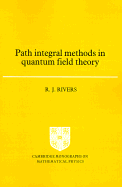Book contents
- Frontmatter
- Contents
- Preface
- 1 Scalar Green functions and their perturbative solutions
- 2 Connected Green functions and their one-particle irreducible components
- 3 Regularisation and renormalisation
- 4 The scalar functional integral
- 5 Series expansions and their summation
- 6 Taking the path integral more seriously
- 7 Quantum theory on non-simply-connected configuration spaces
- 8 Stochastic quantisation
- 9 Fermions
- 10 Quantum electrodynamics
- 11 Non-Abelian gauge theories
- 12 Explicit symmetry breaking and its classical limit
- 13 The effective potential
- 14 Field theory at non-zero temperature
- 15 Field theory at non-zero temperature: real-time formulation
- 16 Instantons
- 17 Composite fields and the large-N limit
- References
- Index
11 - Non-Abelian gauge theories
Published online by Cambridge University Press: 04 April 2011
- Frontmatter
- Contents
- Preface
- 1 Scalar Green functions and their perturbative solutions
- 2 Connected Green functions and their one-particle irreducible components
- 3 Regularisation and renormalisation
- 4 The scalar functional integral
- 5 Series expansions and their summation
- 6 Taking the path integral more seriously
- 7 Quantum theory on non-simply-connected configuration spaces
- 8 Stochastic quantisation
- 9 Fermions
- 10 Quantum electrodynamics
- 11 Non-Abelian gauge theories
- 12 Explicit symmetry breaking and its classical limit
- 13 The effective potential
- 14 Field theory at non-zero temperature
- 15 Field theory at non-zero temperature: real-time formulation
- 16 Instantons
- 17 Composite fields and the large-N limit
- References
- Index
Summary
Non-Abelian gauge theories play a dual role in the construction of realistic field theories. On the one hand, quantum chromodynamics (QCD) deals with the SU(3) ‘colour’ interaction between quarks and gluons in the construction of hadrons. Technically it provides a generalisation of the original non-Abelian SU(2) gauge theory proposed by Yang & Mills (1954), although the context is very different. On the other hand, the massive gauge particles that mediate the electroweak interactions are explained through a non-Abelian gauge theory in which symmetry breaking induces gauge field masses without interfering with renormalisability.
We shall turn to this latter use in later chapters. In this chapter we shall just highlight a few of the properties of a pure unbroken non-Abelian gauge theory like QCD (in n = 4 dimensions). The emphasis will be on using the path integral to quantise the theory, developing ideas that have already been introduced in QED (and scalar theories). In particular, the path integral is ideal for displaying gauge identities, which are necessarily more complicated because of the non-Abelian nature of the gauge group. Further consequences of having a non-Abelian group e.g. the existence of θ-vacua, will be postponed until later chapters. For a fuller discussion of non-Abelian gauge theories the reader is referred to the standard texts (e.g. Abers & Lee, 1973).
- Type
- Chapter
- Information
- Path Integral Methods in Quantum Field Theory , pp. 199 - 219Publisher: Cambridge University PressPrint publication year: 1987

